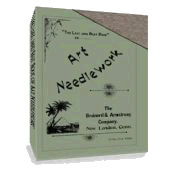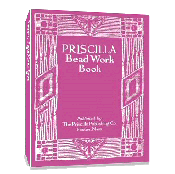[]Subscribe To This Site
Scent Balls and Pomanders
Did you know that pomanders had quite a history? And they make as lovely a Christmas gift today as they did in 1882 (and before) when this information was published.
Scent Balls and Pomanders
“A scent ball,” mentioned as belonging to the daughter of an earl, in 1321, is described as a “poume all aumbre,” of which, doubtless, ambergris was a principal ingredient. Nutmegs set in silver and much decorated with stones and pearls were also in request. These delicate creations for the toilette are alluded to as “rare and highly prized.”
Even crowned heads did not disdain acquaintance with the attractive trifle. When in 1423 account was made of the valuables of King “Henry the Fift,” prominence was given to “a musk ball of gold weighing eleven ounces, and another of silver-gilt,” hardly less precious, counting the costly ingredients. A little later the style that they be “worn as a pendant to a lady’s girdle’ was in vogue.
Many recipes for the compounding of these aromatic balls were then offered for popular favor. Probably because less expensive, oranges were introduced as a satisfactory substitute, but special preparation was demanded; often dried Seville oranges were studded with cloves and other pungent spices, and were regarded as a preservation against infection. A writer of Wolsey’s time describes the cardinal “entering a crowded chamber, holding in his hand a very fair orange, whereof the meat within was taken out, and filled up again with the part of a sponge, wherein vinegar and other convections against pestilent airs, into the which he ominously smelt when passing among the press.”
In the gilt and silver pomanders perforations were made, through which odors from hidden spices escaped. We have them in our own day, artistic and dainty in appearance, often adorned with gems, having chains and rings attached, as did “or well-appointed foremothers,” and containing the very essence of sweet and searching odors, pungent perfumes, filling the atmosphere with “intangible delight.
Instead of wearing pomanders, Victorians hung them in their closets to keep moths away. Here is a current recipe to make pomanders for your home.
How to Make Clove Studded Pomanders

These are great to have sitting out in a lovely bowl or to hang in your closet. They add a wonderful scent to the air. They would also make wonderful gifts when tied up with a beautiful ribbon.
Materials you will need for one pomander
- Orange, lemon or lime, unblemished. Apples may be used but do not last as long as citrus fruits.
- Whole cloves. Since you will need a lot, you may find it most cost effective to buy them in bulk.
- Spice mixture: equal measurements of cinnamon, nutmeg, and ground cloves and orris root. 4 drops of Sandalwood oil may be substituted for orris root.
- brown paper bag
- masking tape and/or thimble
- toothpick, fork, knitting needle or anything about that size to stick into the fruit to make holes
- ribbon
Each pomander will take approximately 1 hour to complete (not including drying time and adding ribbon).
To Make
- Select a blemish free piece of fruit. Oranges, lemons and limes are perfect for this.
- Mix the spices and orris root (or Sandalwood) in a brown bag
- Place masking tape on fruit if you want a design or where you want ribbon to be placed when completed. If you are covering the whole fruit completely with cloves, you can skip this step.
- If you are not using a thimble, use masking tape and cover the fingers you will be pushing the cloves on with. If you don’t use either the thimble or tape, you will find your fingers becoming very sore.
- Once you have masked off any area with tape, begin poking holes in the fruit with a toothpick, fork, knitting needle or something to produce that size hole and inserting a clove in each hole as you go. It is easiest to start at the top of the fruit and work straight down to the bottom. Do this until the fruit is covered. Note, cloves should not overlap. The maximum spacing between the cloves should not be more than ¼ inch. The closer they are together, the longer the pomander will last.
- Roll the studded fruit in the spices that you mixed earlier in a brown bag until it is completely and evenly covered.
- Leave the fruit in the bag and place the bag in a cool, dry place for about 4 to 6 weeks. Roll the pomander in the spices daily during this time. It will take this amount of time for the pomander to dry completely. Note: If you notice any mold or the fruit rotting, throw it out. There is no way to save it. If your spice mixture seems a bit damp, leave the bag open to allow air to circulate and dry it.
- After 4 weeks, check to see if pomander is completely dry. To do this you can tap on it. If it sounds hollow and it feels light, it is completely dry. Shake off any excess spices.
- If using ribbon to hand it up by, now is the time to put it on. Wrap it on where the tape was placed. Tie a knot and make a loop for hanging.
Pomanders last for years. If it loses its fragrance you can mist it lightly with water and roll it in your spice mixture in which a few drops of clove or cinnamon oil has been added. Leave the pomander in the mixture for a few days before using it as before.
Return to top of Scent Balls and Pomanders page.
Return to Victorian Embroidery page.
Return to Home page.



 433 pages!
433 pages!

